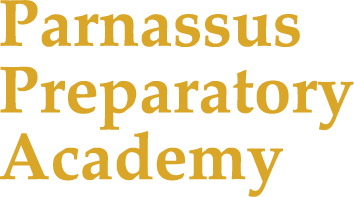Junior Kindergarten through Second Grade
Reading, writing, spelling, and arithmetic are the foundation upon which the tower of learning is built, and they are given the highest priority in our Junior K to Second Grade classes. The basic skills, work habits, and attitudes formed in the primary years are of critical importance.
Phonics and Reading
Phonics is the system of letter-sound association taught to children for the purposes of learning to read and spell. Phonics is most effective when taught systematically, thoroughly, intensively, and in a logical and time-tested sequence.
Our primary resource for phonics instruction in the kindergarten class is Memoria Press’ First Start Reading, a program which teaches correct pencil grip, manuscript form, consonant and short vowel sounds, three-letter word formation, consonant blends and long vowels/silent e. Common words which do not fit into any word family are introduced after students learn to blend three-letter words.
Spelling and Handwriting
Students develop the visual memory for accurate spelling by a systematic study of phonics, word families, and spelling rules, and by a lifetime of seeing, reading, and writing words correctly. It is very important to reduce opportunities for children to write or see misspelled words; young students who are allowed to spell creatively or phonetically have a confused visual memory that is difficult to overcome.
Copybook is an exercise consisting of copying sayings, maxims, and poetry in the student’s best handwriting. Copybook is an important step in developing good penmanship, punctuation, and spelling. Our teachers work to help students form and maintain a proper pencil grip. Correct pencil grip reduces hand fatigue and as a consequence also reduces resistance to written work in general. The discipline of neat and legible handwriting is an aid to spelling and instills the value of accurate, careful work – an important academic skill that carries over into every aspect of learning. In the 1st and 2nd grade classes students continue to practice manuscript while also beginning cursive script with Memoria Press’ New American Cursive program.
Arithmetic
Immediate recall of addition and subtraction facts through 18 is the focus in the primary grade classes. Number formation, counting, time, calendar, measurement, and money are the initial skills of K-2. In the 2nd grade class, the students also begin multiplication with the 1x, 2x, 5x, and 10x facts. Students learn number sense by skip-counting, games, and drills, all of which make math time enjoyable.
Geography, History, and Science
Our Read-Aloud Program consists of one book for each week. These books provide a rich language experience for students, as each book is read aloud every day the class meets and is accompanied by oral questions and discussion. Students learn new and interesting words and delight in rhyme and word play. They learn about holidays, history, geography, science and more. Students study globes and maps to learn continents, oceans, major countries, and basic geography terms. A craft is included for each read-a-loud book.
Music and Art
Students have music instruction once a week; they have lessons in the basic elements of music, including ear training, note reading, and choral performance. In music appreciation, students are introduced to a well-known composer and piece of music weekly. In art appreciation, primary students learn about an artist and study an art masterwork every week. Fine art instruction is also provided once per week through Meet the Masters - historical, culturally diverse, Standards-Based art lessons to inspire young artists.
